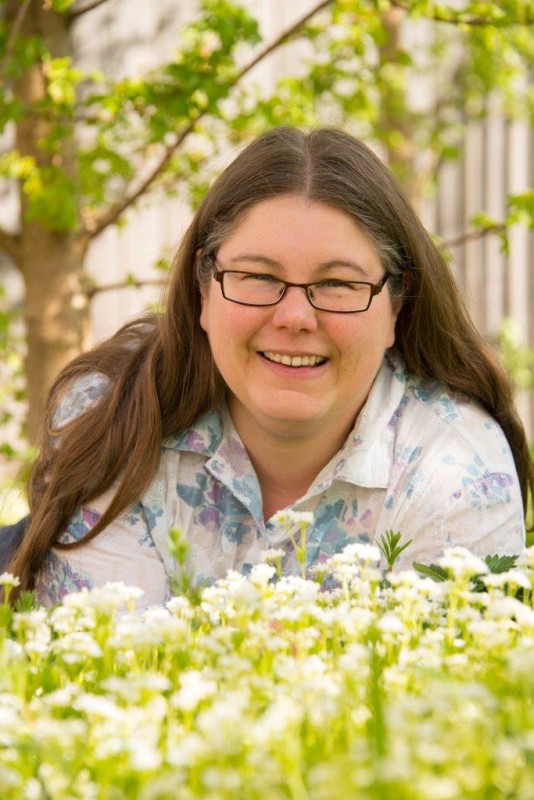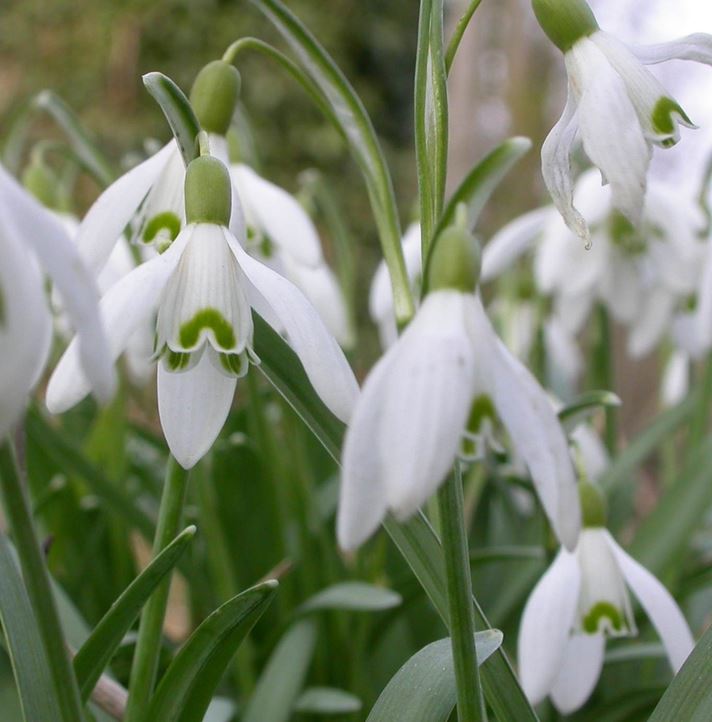
Power to the people: Inspiring a passion for nature in others through citizen science
As a devotee of amateur nature recording with a passion for trees and woods, it’s fair to say that Citizen Science Manager for the Woodland Trust, Dr Kate Lewthwaite, is in her dream job. She tells us how a combination of biding her time and being proactive got her to where she is today, talks about appearing on BBC SpringWatch and explains why we all need to get involved in citizen science.
What drew you to work in conservation?
I have always been fascinated by plants. My mum was a botanist and I had my own greenhouse by the age of eight. Plus, I grew up on a farm so had fantastic exposure to wildlife and the countryside from a young age. One of my earliest memories is of my mum showing me the parasitic plant ‘dodder’ that looks like red knitting wool tangled amongst other plants – I thought it was the most amazing thing I had ever seen.
What key steps have you taken in your career?
Initially I wanted to be a research scientist but after I got my PhD in ecology from the University of Durham, I realised I was not going to be the next Einstein for ecology. I’d always had an interest in science communication, so while I was looking for a post-doctoral position, I took a job as a writer for a science communications company to tide me over. I soon realised that it was no stop-gap, however; but something that I was really passionate about.
I worked for a while on museum interpretation for the same company, before its funding dried up, and then for an outreach programme supporting children to go to university, which wasn’t quite right for me as it focused on the whole curriculum instead of just science.
This led to a job as an education officer in the communications department of the Woodland Trust. The role gave me very varied experience in a number of areas and over time it has evolved into my dream job. I’m now in my twelfth year at the Trust.
What does your role as citizen science manager involve?
My role is that of a project manager, getting citizen science projects off the ground, overseeing the recruitment and management of volunteers, liaising with colleagues at the Woodland Trust who manage other citizen science projects as well as with partner organisations and promoting projects by engaging with the media.
The role of our citizen scientists is to collect data on the current state of trees, woodland and wildlife in the UK. For example, they might record the location of ancient trees so that we can help protect them or the timing of leaf fall to help us chart the effects of climate change.
For the UK National Tree Seed Project, led by a colleague, we’ve partnered with Kew Gardens to ask volunteers to collect tree seeds. The seeds will be preserved in the National Seed Bank for 100 years. We particularly need ash tree seeds due to the fact that we are losing our ash trees to ash dieback.
With a citizen science project called Observatree, we have collaborated with Forest Research and other partners to ask people to look out for the first signs of new disease and pests in trees so that we have a chance of nipping them in the bud before they’ve done too much damage. Sadly, we were too late with ash dieback, but hopefully Observatree will help us to control a new pest threat called the oriental chestnut gall wasp. The first two recorded sightings of the pest came from volunteer groups, so it goes to show just how important citizen science is.

New pest threat: an oriental chestnut gall wasp, Observatree.
My role would be difficult without a background in science and knowledge of volunteering as I need to be able to work out what is reasonable to ask volunteers to do. For example, will they be able to tell the difference between hawthorn and blackthorn in flower?
Why is citizen science an important part of conservation?
The term ‘citizen science’ may be relatively modern, but the practice has been going on for centuries. It is only relatively recently that science has been studied by professional academics. In the past, it would have been done mostly by amateur gentlemen. So with citizen science, we have come full circle.
There has always been a strong tradition of amateur recorders in the field of nature and the environment. There simply aren’t enough paid professionals and they tend to get stuck in labs and offices. Citizen science is vital for conservation because we need lots of eyes on the ground.
Why do trees and woods matter and how is the Woodland Trust helping to preserve them?
Trees and woodland are important for biodiversity and our ancient woodlands are amongst the longest standing habitats we have in the UK. We rely on trees for a multitude of things, from the timber industry to recreational and health benefits. For example, studies show that hospital patients get better quicker if they can see trees from their window.
The Woodland Trust works to protect woodland in three ways:
Firstly, it strives to protect ancient woodland from development for example opposing the proposed route of the High Speed 2 Rail Line, as this will involve the destruction of many ancient woods. The Trust owns around 1,000 woods, some of which were rescued from development, and aims to demonstrate best practice in woodland management.
Secondly, the Trust helps to restore woodland, for example by working closely with landowners to address the damage that conifer planting has done to ancient woods.
Thirdly, it encourages everyone to plant trees and enjoy woods. Only 13% of the UK is woodland compared to the European average of 37% so our woods are really precious.
What has been your best career highlight so far?
Last year, we collaborated with BBC SpringWatch and the British Science Association for our citizen science project, Nature’s Calendar, by asking volunteers to spot and report the first signs of spring, such as oak leafing and swallows arriving. Around 17,000 viewers took part and we used their sightings to calculate the speed of spring across Britain at about 2mph.
I appeared on an episode of SpringWatch Unsprung to talk about the findings. It was fun and exciting but nerve-wracking! The following morning, I was on Radio 4’s Today programme, talking about Nature’s Calendar again. How the public understand and engage with science is so important and this was a great opportunity to connect with more people.
What is the most challenging aspect of your work?
The most challenging part is managing several projects at once. Lots of our citizen science projects are tied to the growing season, such as trees leafing in spring and pests or diseases being noticed so the activity peaks tend to all happen at once and things can get mad busy. This is when the media all want to talk to you and there is often only a short window of time to get messages out.
What advice would you give to someone hoping to follow in your footsteps?
It’s sometimes hard to just jump straight into your ideal conservation job, but the longer you stay in a role, the more you can develop your skills and make it your own. I remember meeting someone in my first week at the Woodland Trust who was managing Nature’s Calendar and thinking ‘I’d love to do that’. Lo and behold, she moved on and that’s now exactly what I’m doing. So there is definitely something to be said for biding your time and waiting for opportunities to crop up.
That said, it can also pay to put your hand up for things. For example, there was a time in the early days of Observatree when there was discussion about who at Woodland Trust should take overall responsibility for delivering our part in it, so I went to my manager and asked if I could take it on. I’d recommend a mixture of being patient and being proactive.
And of course, I would also encourage people to get involved in citizen science. Taking part shows passion and interest and there are opportunities everywhere, right through the year, so everyone should be able to find a project to suit them. There is no excuse!

Signs of spring: Snowdrops, Nature’s Calendar, Woodland Trust.
What is your favourite tree?
I’m pretty passionate about all trees so it is hard to choose one, but if I were to pick a favourite tree I would have to go with a huge pollarded willow near to where I grew up in Stratford-Upon-Avon in Warwickshire. I used to climb up into it as a child and wrap the branches around me.
Do you have a favourite song or piece of music that inspires you?
I love singing fantastic old hymns that celebrate the beauty of creation and the wonder of the world – the sort of thing I’d like to belt out from the top of a mountain.

